10 Best Free AI Fashion Designer Tools to Refresh Your Style
10 best free AI fashion designer tools for 2024. From virtual prototyping to trend forecasting, redefine style with top apps & innovations!
Discover the 10 best free AI fashion designer tools for 2024 that are revolutionizing the way designers create and innovate. From virtual prototyping to trend forecasting, these tools empower designers to refresh their style with cutting-edge technology. Whether you’re seeking tools to streamline workflows, generate realistic prototypes, or predict future trends, this comprehensive guide has you covered.
We’ve carefully curated this list using insights from leading sources, including The F* Word, RealSpace3D, Unite.AI, and NewArc.AI. Their expert reviews and in-depth analyses have helped shape the recommendations in this article, ensuring you get the best tools to elevate your designs.
Embrace the future of fashion with AI-powered innovations that redefine creativity and efficiency. These tools are not just about convenience—they’re about transforming the way fashion is envisioned and brought to life. Let’s dive into the top tools that will revolutionize your design process!
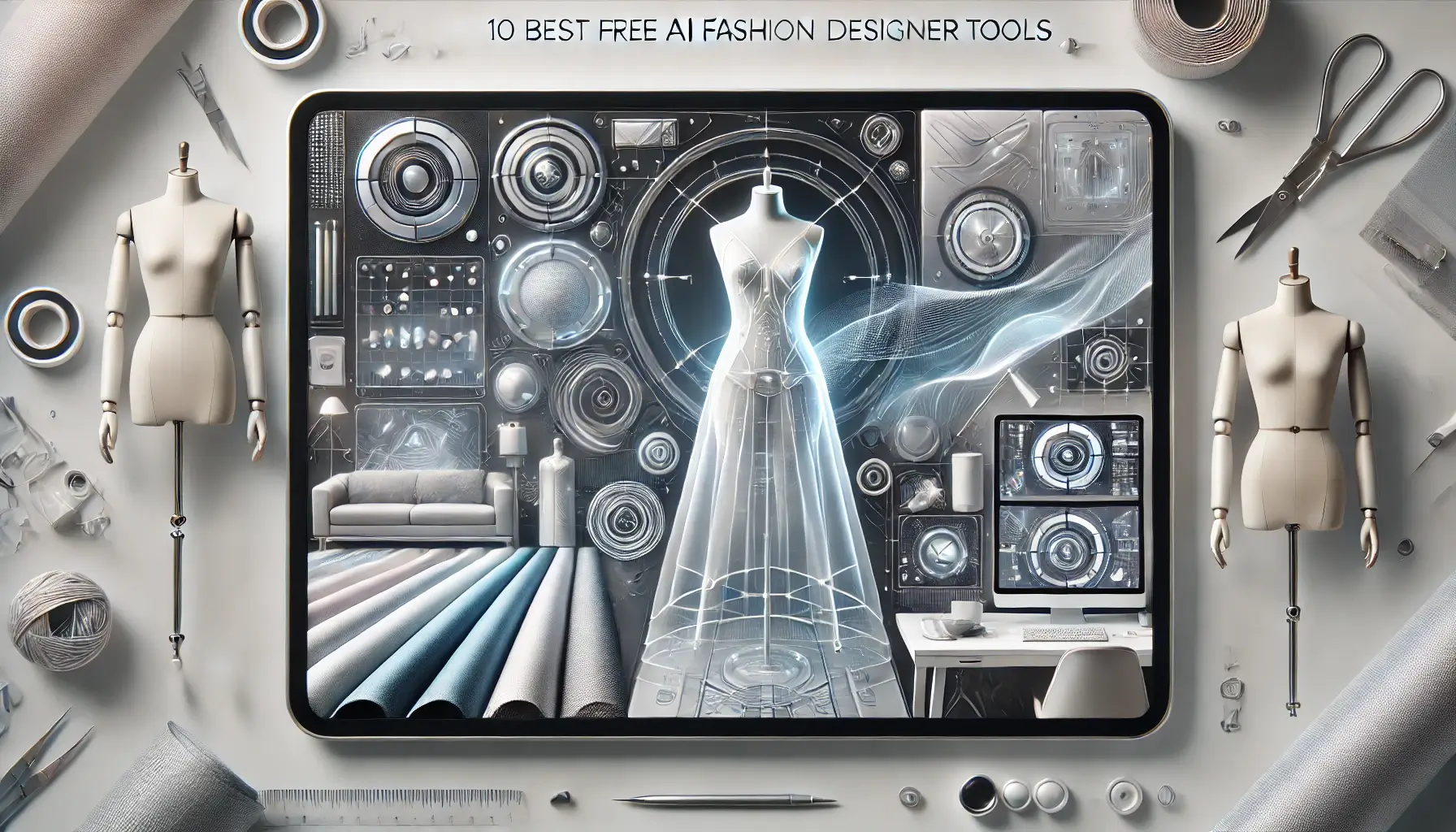
Benefits of AI Tools in Fashion Design
AI tools are transforming how designers create, innovate, and connect with audiences. Here are some key benefits they offer:
- Enhanced Efficiency: Tools like CLO 3D and VStitcher streamline processes such as prototyping and garment visualization. Designers can explore various materials, colors, and patterns digitally, saving time and cutting costs associated with physical samples.
- Accurate Trend Forecasting: AI-powered platforms like FASHWire and Heuritech analyze consumer behavior and market data to predict upcoming trends. This allows designers to stay ahead of shifting preferences and create collections that resonate with their audiences.
- Increased Sustainability: Optitex optimizes pattern-making to reduce fabric waste, while tools like Botika generate realistic product visuals without requiring traditional photoshoots. These advancements support eco-friendly practices and reduce the industry's environmental impact.
- Improved Creativity: AI enhances creativity by automating tedious tasks. Adobe Illustrator’s AI features, for example, simplify design refinements, enabling designers to focus on innovation and artistic expression.
- Cost Savings: With AI tools minimizing material waste and reducing manual work, both small and large fashion brands can achieve significant cost efficiency.
- Real-World Success: Sarah, a fashion startup owner, shared, “Using CLO 3D revolutionized our workflow. It allowed us to perfect our designs virtually before production, saving both time and money.”
By combining automation, precision, and sustainability, AI tools provide a dynamic foundation for modern design, ensuring that creativity meets practicality.
10 Best Free AI Fashion Designer Tools in 2024
The world of fashion design is evolving rapidly, thanks to the integration of AI tools. These cutting-edge solutions empower designers to create, innovate, and stay ahead of trends. Below, we’ve curated a list of the top 10 free AI fashion designer tools for 2024, each offering unique features to enhance creativity, efficiency, and sustainability. From virtual prototyping to personalized recommendations, these tools are shaping the future of design.
| Tool Name | Key Features | Benefits | Why It Stands Out |
|---|---|---|---|
| CLO 3D |
- Realistic 3D garment simulations - Virtual prototyping and fabric behavior analysis - Time-saving adjustments |
Eliminates the need for physical samples, saving time and resources. | Accurate garment simulation for streamlined production. |
| Adobe Illustrator |
- AI-powered recoloring and adjustments - Advanced auto-tracing - Seamless integration with Adobe suite |
Enhances workflow efficiency and supports creative exploration. | Combines robust creative tools with intuitive AI features. |
| VStitcher |
- Lifelike 3D visualization - Extensive fabric libraries - PLM system integration |
Streamlines the design-to-production process with accuracy. | Real-world garment accuracy and production-readiness. |
| FASHWire |
- Predictive analytics - Consumer behavior insights - Trend forecasting tools |
Helps designers align collections with market trends. | Analyzes global trends to guide data-driven decisions. |
| StyleSage |
- Real-time pricing analysis - Competitive market intelligence - Consumer trend tracking |
Provides actionable market insights for pricing strategies. | Focuses on competitive pricing and market positioning. |
| Optitex |
- Digital pattern creation - AI-assisted grading - Virtual garment fitting |
Automates pattern-making to reduce waste and accelerate timelines. | Sustainability-focused pattern and fitting solutions. |
| The New Black |
- Rapid concept-to-creation - Customizable templates - AI-enhanced design adjustments |
Allows quick iterations without sacrificing originality. | Speed and versatility for diverse design needs. |
| YesPlz |
- AI-powered personalization - Visual discovery tools - ChatGPT Fashion Stylist |
Bridges the gap between design and consumer preferences. | Excels in personalization and customer interaction. |
| Botika |
- AI-generated apparel images - Customization for model diversity - Cost-effective visuals |
Enables brands to showcase products without photoshoot challenges. | Efficient, high-quality image generation for fashion visuals. |
| Heuritech |
- Social media data analysis - Predictive trend forecasting - Collection alignment tools |
Keeps designers ahead by predicting upcoming trends. | Converts data into actionable fashion insights. |
CLO 3D
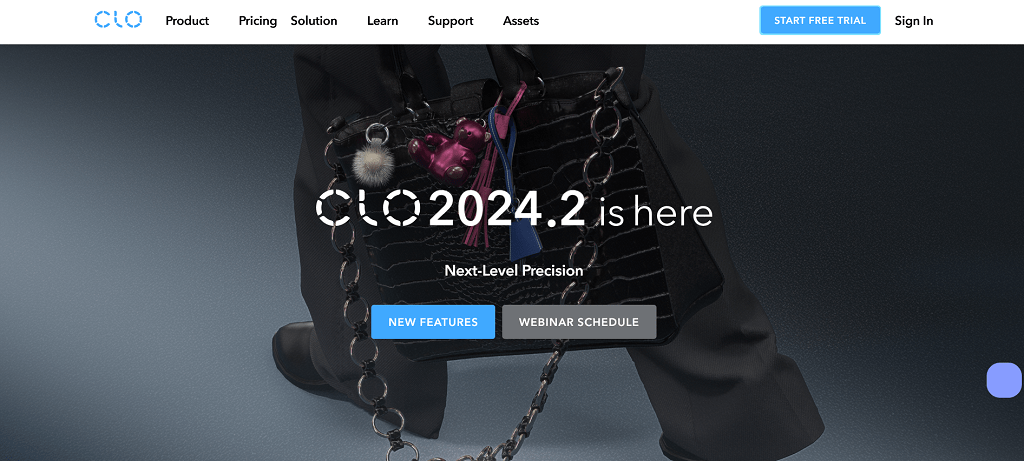
CLO 3D has revolutionized the way designers approach virtual prototyping. This advanced tool allows creators to design garments in a 3D environment, offering lifelike simulations of fabric drape and fit. It’s particularly known for its precision in mimicking fabric properties, making it easier to perfect designs before committing to physical samples.
Key Features
- Realistic 3D garment simulations
- Tools for virtual prototyping and fabric behavior analysis
- Time-saving adjustments and visualization
Benefits for Fashion Designers
CLO 3D helps designers save time and resources by eliminating the need for multiple physical samples. It’s a go-to tool for reducing waste and speeding up the design-to-production process.
Why It Stands Out
Its unparalleled ability to simulate garments with accuracy makes it indispensable for both established brands and startups.
Adobe Illustrator
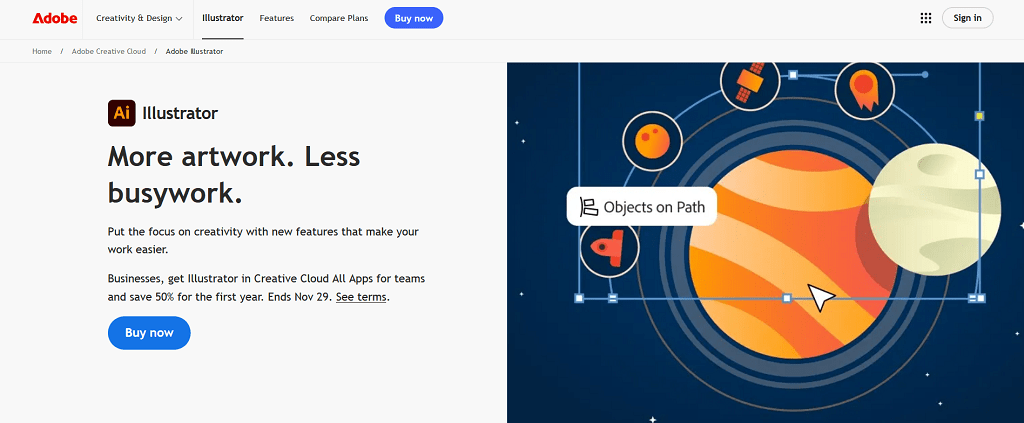
Adobe Illustrator remains a staple for digital sketching, but its AI-powered enhancements have taken it to the next level. With Adobe Sensei technology, tasks like recoloring artwork and auto-tracing become effortless, freeing up time for creative exploration.
Key Features
- AI-driven recoloring and vector adjustments
- Advanced auto-tracing capabilities
- Seamless integration with other Adobe products
Benefits for Fashion Designers
Illustrator’s AI features enhance workflow efficiency and allow designers to experiment with different styles quickly.
Why It Stands Out
Its combination of advanced creativity tools and ease of use keeps it a leader in the industry.
VStitcher
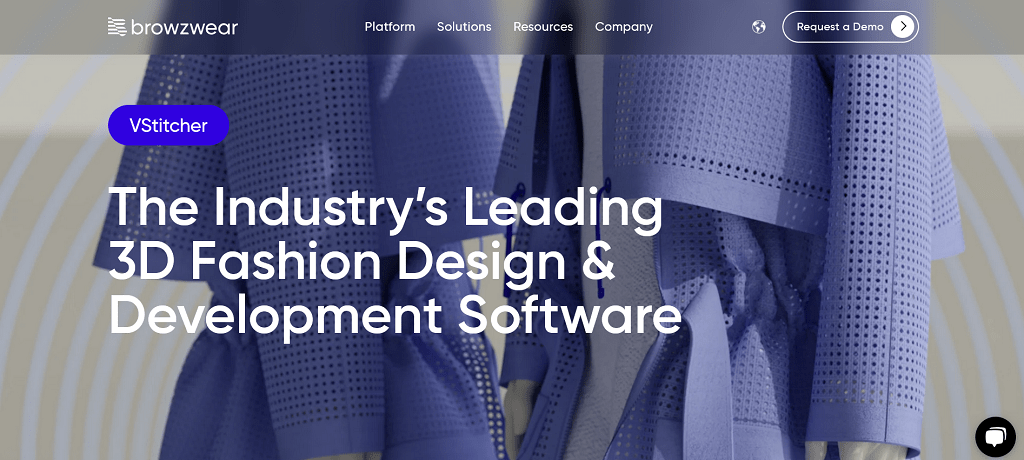
VStitcher by Browzwear is another powerhouse in 3D garment design. It supports lifelike simulations and integrates seamlessly with PLM systems for smooth workflow management.
Key Features
- Lifelike 3D garment visualization
- Extensive fabric libraries and simulation tools
- PLM integration for production-ready designs
Benefits for Fashion Designers
VStitcher’s intuitive platform helps streamline the design process, from ideation to production. Designers can create and adjust garments in a fully virtual space.
Why It Stands Out
Its focus on real-world garment accuracy and production-readiness sets it apart.
FASHWire
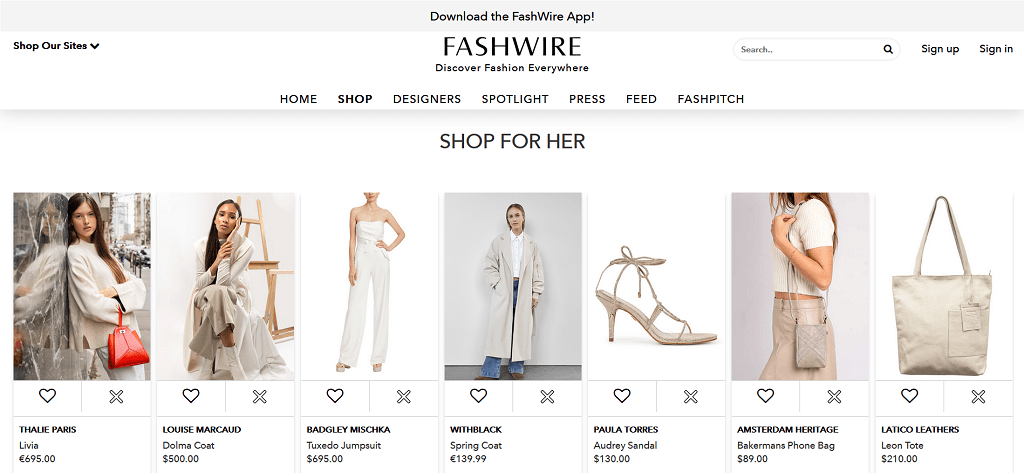
FASHWire brings trend forecasting to the forefront, using predictive analytics to help designers and brands stay ahead of emerging preferences.
Key Features
- Predictive analytics for trend forecasting
- Insights into consumer behavior and market trends
- Tools for refining collections based on data
Benefits for Fashion Designers
By understanding what customers want, FASHWire empowers designers to craft collections that resonate with their target market.
Why It Stands Out
Its ability to analyze global trends and consumer data makes it invaluable for trend-conscious brands.
StyleSage
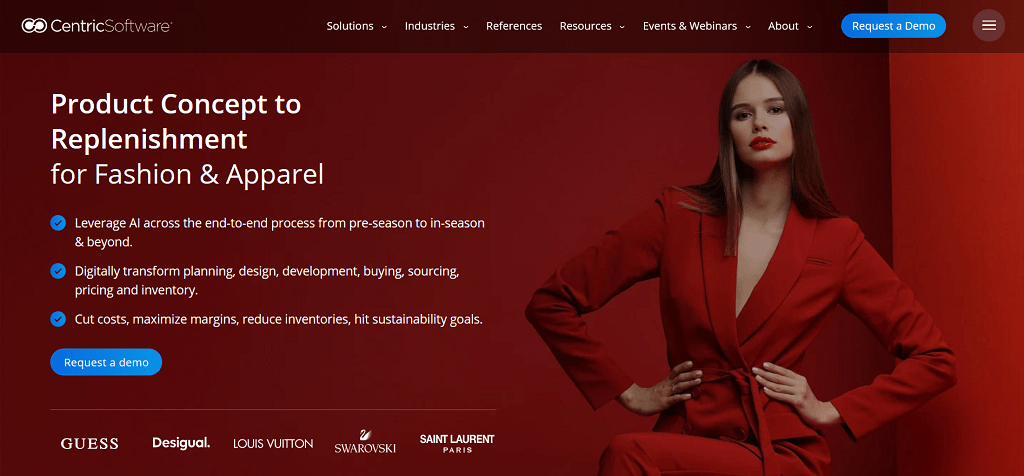
StyleSage is a market intelligence tool that offers competitive pricing insights and tracks consumer trends, making it a favorite among fashion retailers and designers.
Key Features
- Real-time analysis of pricing and discounts
- Market intelligence for competitive positioning
- Trend tracking for consumer behavior insights
Benefits for Fashion Designers
It provides data-driven insights that help designers position their products effectively in the market.
Why It Stands Out
Its focus on pricing intelligence and market strategy fills a unique niche in the industry.
Optitex
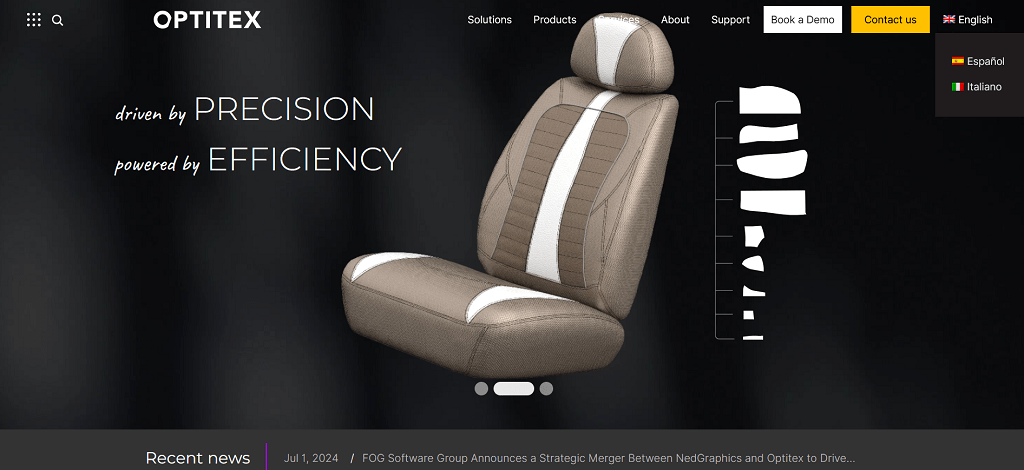
Optitex transforms pattern-making and garment fitting with its AI-powered tools. It allows designers to create and adjust digital patterns effortlessly, reducing the need for physical prototypes.
Key Features
- Digital pattern creation and adjustments
- AI-assisted grading and marker making
- Virtual fitting tools for precise measurements
Benefits for Fashion Designers
Optitex enhances efficiency by automating tedious tasks, resulting in faster production timelines.
Why It Stands Out
Its focus on pattern-making and virtual fitting aligns with sustainability goals in fashion.
The New Black
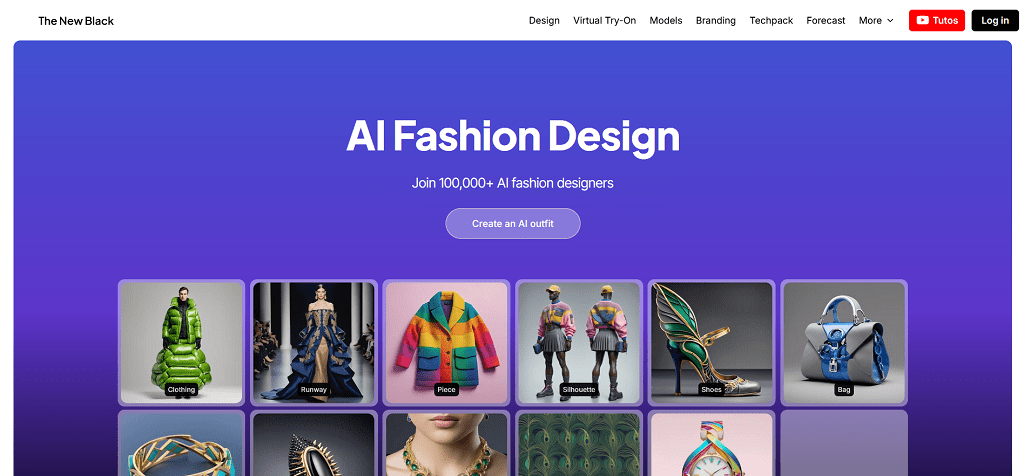
The New Black simplifies the design process with its AI-driven platform, offering rapid concept creation and customization options.
Key Features
- Tools for fast concept-to-creation workflows
- Customizable design templates
- AI-enhanced adjustments for user-uploaded designs
Benefits for Fashion Designers
This tool is ideal for designers who need to iterate quickly without compromising on originality.
Why It Stands Out
Its speed and versatility make it an excellent choice for both professionals and newcomers.
YesPlz

YesPlz focuses on enhancing the shopping experience with its AI-driven personalization engine. It’s an ideal tool for online retailers and designers looking to offer tailored recommendations.
Key Features
- AI-powered personalization engine
- Visual discovery tools for tailored fashion picks
- ChatGPT Fashion Stylist integration
Benefits for Fashion Designers
It bridges the gap between design and consumer interaction, offering insights into what resonates with buyers.
Why It Stands Out
Its emphasis on personalization sets it apart in the fashion tech landscape.
Botika
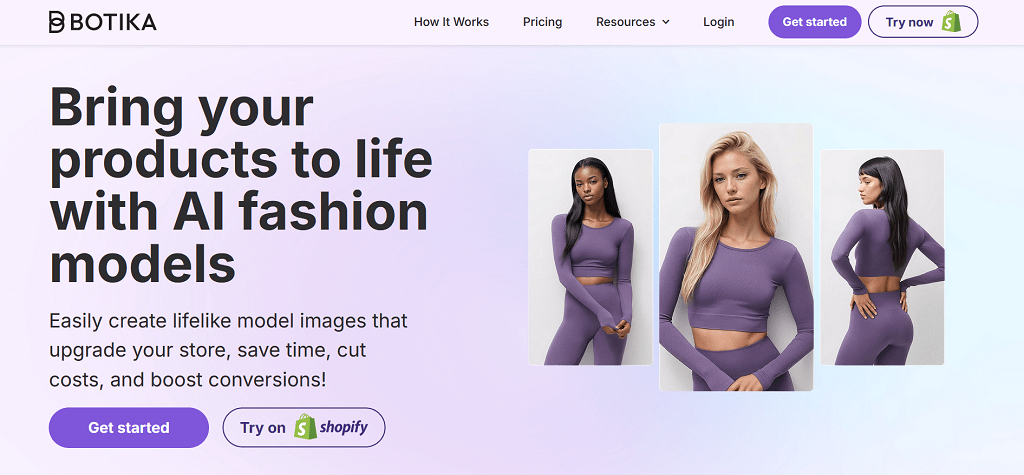
Botika streamlines apparel photography by generating high-quality product images using AI. This eliminates the need for traditional photoshoots, saving time and money.
Key Features
- AI-generated realistic apparel images
- Customization options for diverse model representation
- Cost-effective alternative to photoshoots
Benefits for Fashion Designers
It allows brands to showcase their products with stunning visuals without logistical challenges.
Why It Stands Out
Its efficiency in generating diverse, high-quality images makes it a game-changer.
Heuritech
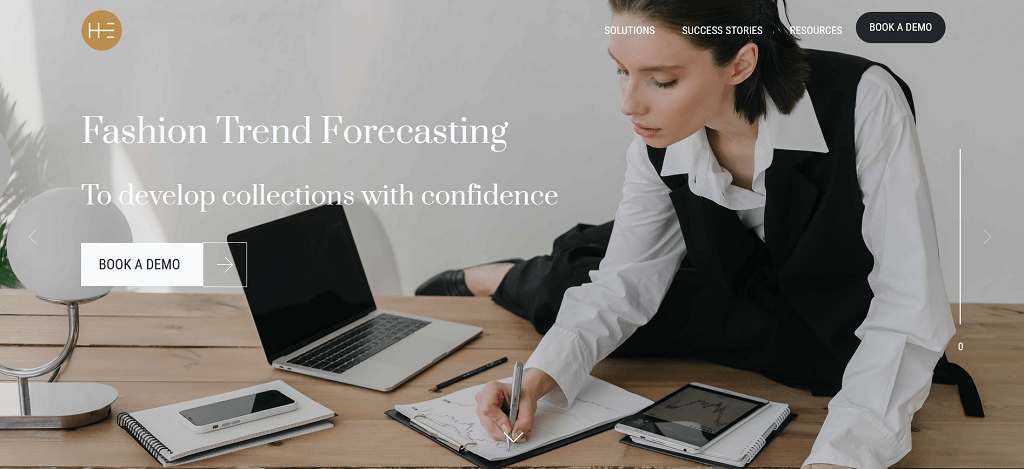
Heuritech uses AI to analyze social media and web data to forecast fashion trends, providing designers with actionable insights.
Key Features
- Social media and web data analysis
- Predictive trend forecasting
- Tools for aligning collections with upcoming trends
Benefits for Fashion Designers
Heuritech ensures that designers are always a step ahead by helping them anticipate what’s next in fashion.
Why It Stands Out
Its ability to translate data into meaningful trends gives designers a competitive edge.
Conclusion: Embracing the Future of AI in Fashion Design
The integration of AI into fashion design is not just a trend—it’s a transformative shift that’s reshaping the industry. From streamlining workflows with tools like CLO 3D and VStitcher to improving sustainability with Optitex and Botika, AI has enabled designers to achieve efficiency, creativity, and innovation like never before.
These tools also make fashion more accessible and responsive to consumer preferences. Platforms such as FASHWire and Heuritech empower brands to anticipate trends, while YesPlz bridges the gap between design and personalized shopping experiences. Together, these technologies help designers not only create but also connect with their audience in meaningful ways.
As Sarah, a fashion startup founder, highlighted, “AI tools have saved us time and resources while pushing the boundaries of what we thought was creatively possible.” This is the essence of AI in fashion—it doesn’t replace creativity; it enhances and amplifies it.
The future of design lies in harnessing AI’s capabilities to blend artistry with technology. Whether you’re an emerging designer or an established brand, these tools are your gateway to innovation, sustainability, and success in an ever-evolving industry.
FAQs About AI Fashion Designer Tools
What are AI fashion designer tools?
AI fashion designer tools leverage artificial intelligence to assist designers in tasks such as prototyping, trend forecasting, pattern creation, and even market analysis. They help streamline workflows, improve sustainability, and enhance creativity by automating tedious tasks and offering data-driven insights.
Are these tools suitable for small businesses or independent designers?
Absolutely! Many tools, such as CLO 3D and Optitex, cater to both large brands and independent designers. Tools like YesPlz and Botika are particularly accessible, offering cost-effective solutions for tasks like virtual prototyping and realistic imagery creation.
How do AI tools support sustainability in design?
AI tools like Optitex reduce waste by optimizing digital pattern-making, while Botika eliminates the need for traditional photoshoots with AI-generated visuals. This minimizes material usage and energy consumption, making sustainable design practices more achievable.
Can AI tools replace the need for traditional design methods?
While AI tools are transformative, they are not a complete replacement for traditional methods. Instead, they enhance the creative process by automating repetitive tasks and providing new ways to experiment. Human creativity remains at the heart of fashion design.
Do I need technical expertise to use these tools?
Most Artificial Intelligence fashion designer tools are designed with user-friendliness in mind. Platforms like Adobe Illustrator and CLO 3D feature intuitive interfaces that don’t require extensive technical knowledge. Many tools also offer tutorials and support for beginners.
What’s the biggest advantage of using AI in fashion design?
The greatest advantage is the combination of efficiency and creativity. AI tools save time on manual tasks, offer innovative design solutions, and provide insights that help designers stay ahead of trends—all while reducing costs and resources.
Are there free versions of these tools available?
Many tools, like YesPlz and Adobe Illustrator (with limited features), offer free trials or basic versions. While premium features often require payment, these free versions are excellent for exploring the tools’ capabilities.
Can AI predict fashion trends accurately?
Yes, tools like Heuritech and FASHWire use AI to analyze consumer behavior and market data, providing highly accurate predictions. However, designers often combine these insights with their own expertise to create standout collections.
How can these tools impact customer engagement?
AI tools like YesPlz personalize shopping experiences, while Botika creates visually engaging product images. These capabilities enhance customer interaction and satisfaction, making designs more marketable.
Are these tools shaping the future of fashion design?
Without a doubt. By merging creativity with technology, AI tools are paving the way for innovative, sustainable, and efficient fashion design practices. They’re essential for any designer looking to stay competitive in a rapidly evolving industry.
How do AI tools help with virtual prototyping?
AI tools like CLO 3D and VStitcher enable designers to create virtual prototypes of garments, allowing them to visualize designs in 3D, make adjustments in real-time, and reduce the need for physical samples.
Can AI tools handle custom designs?
Yes, many tools, such as The New Black and Botika, support custom designs by allowing users to tweak templates, upload existing designs, or adjust features based on specific preferences or measurements.
Do Artificial Intelligence fashion tools work for accessory design?
Some tools, like Adobe Illustrator, are versatile and can be used for designing accessories, logos, or even packaging. Tools tailored specifically for garments might not be as effective for accessories, but general design platforms often provide the necessary features.
Are these tools compatible with other software?
Most Artificial Intelligence fashion tools integrate seamlessly with existing design software or PLM (Product Lifecycle Management) systems. For instance, VStitcher connects with various production platforms, ensuring a smooth workflow from design to production.
Can these tools help with branding?
Absolutely. Tools like Adobe Illustrator and Designhill’s AI Logo Maker are excellent for branding, offering solutions for logo creation, brand identity, and visual consistency across marketing materials.
How do AI tools assist in trend forecasting?
Tools like Heuritech and FASHWire use advanced algorithms to analyze social media, consumer behavior, and market data, providing insights into upcoming trends and customer preferences.
Can AI tools help with marketing designs?
Yes, tools like Botika can generate high-quality images for marketing campaigns, while others, like StyleSage, provide market intelligence to refine strategies for product launches or promotional activities.
Are these tools secure for proprietary designs?
Reputable tools prioritize user privacy and data security. It’s important to choose platforms that adhere to strict data protection standards, especially for designs and intellectual property.


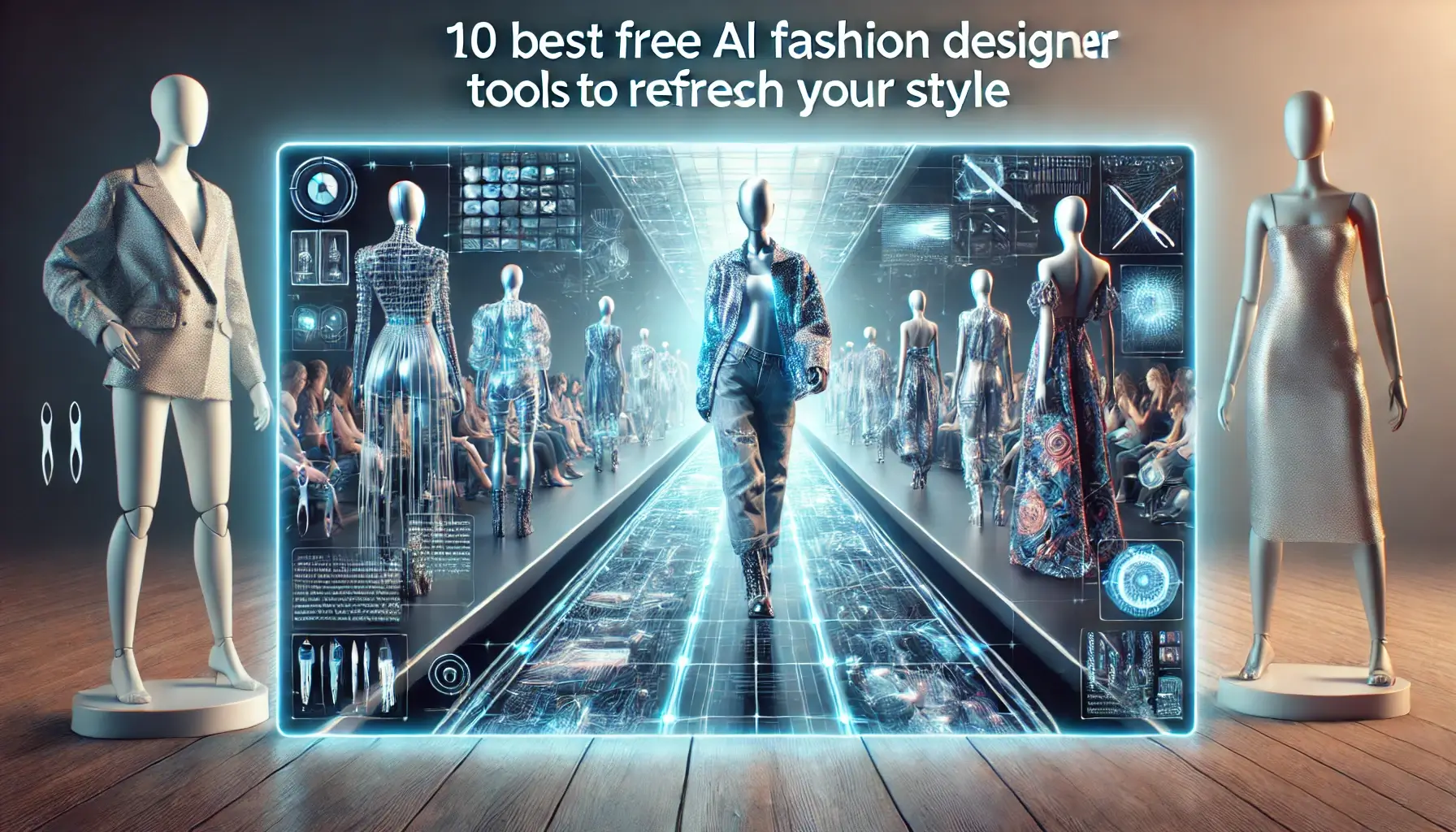
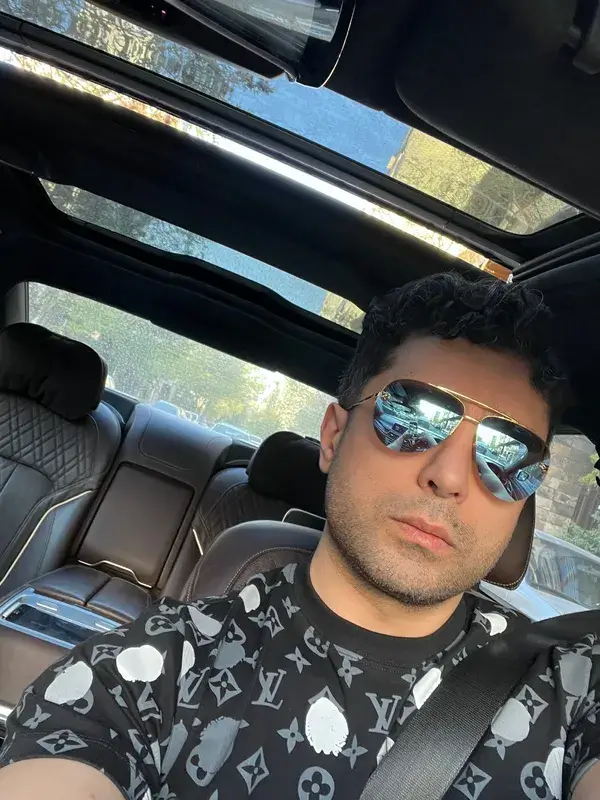
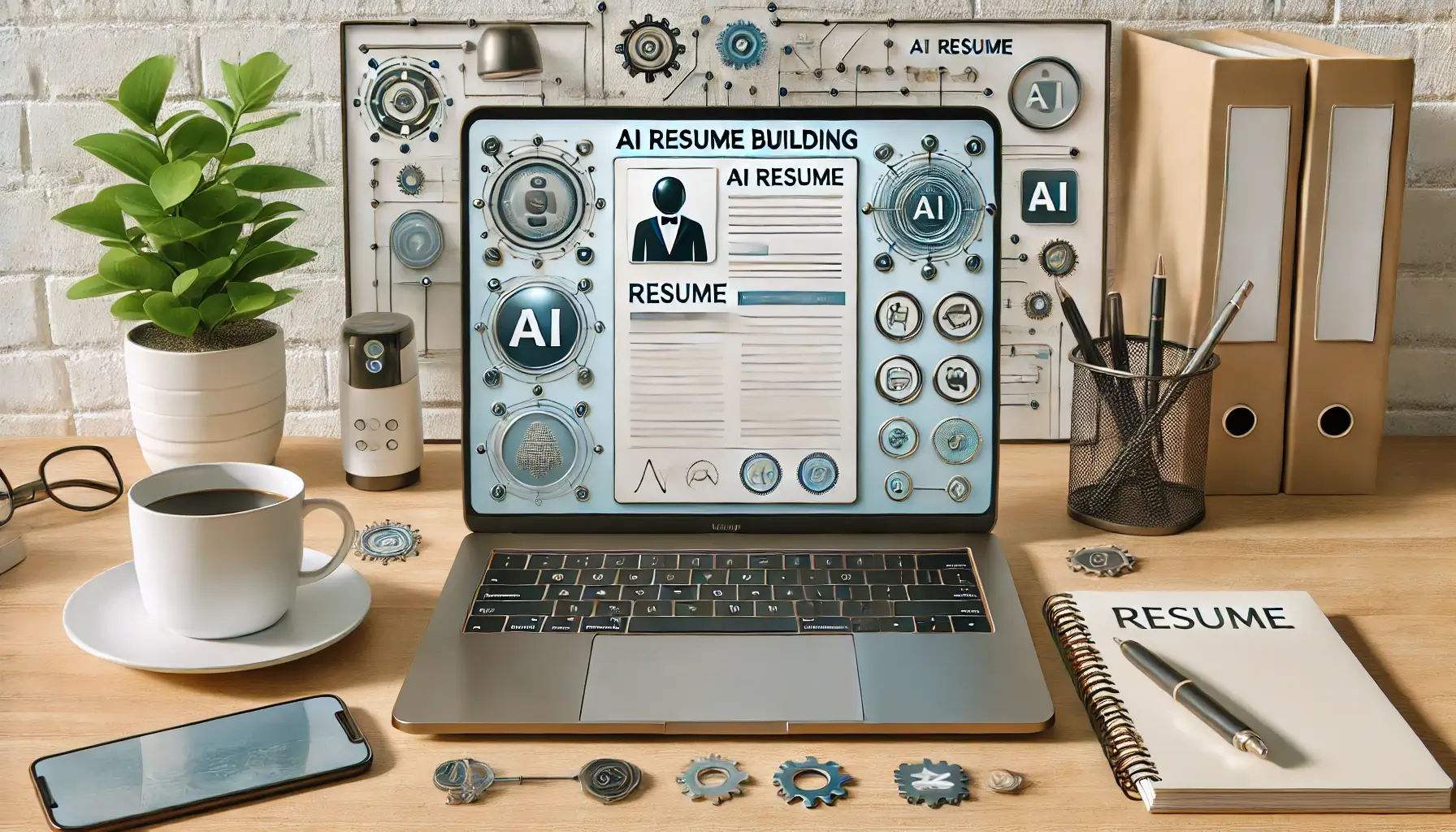



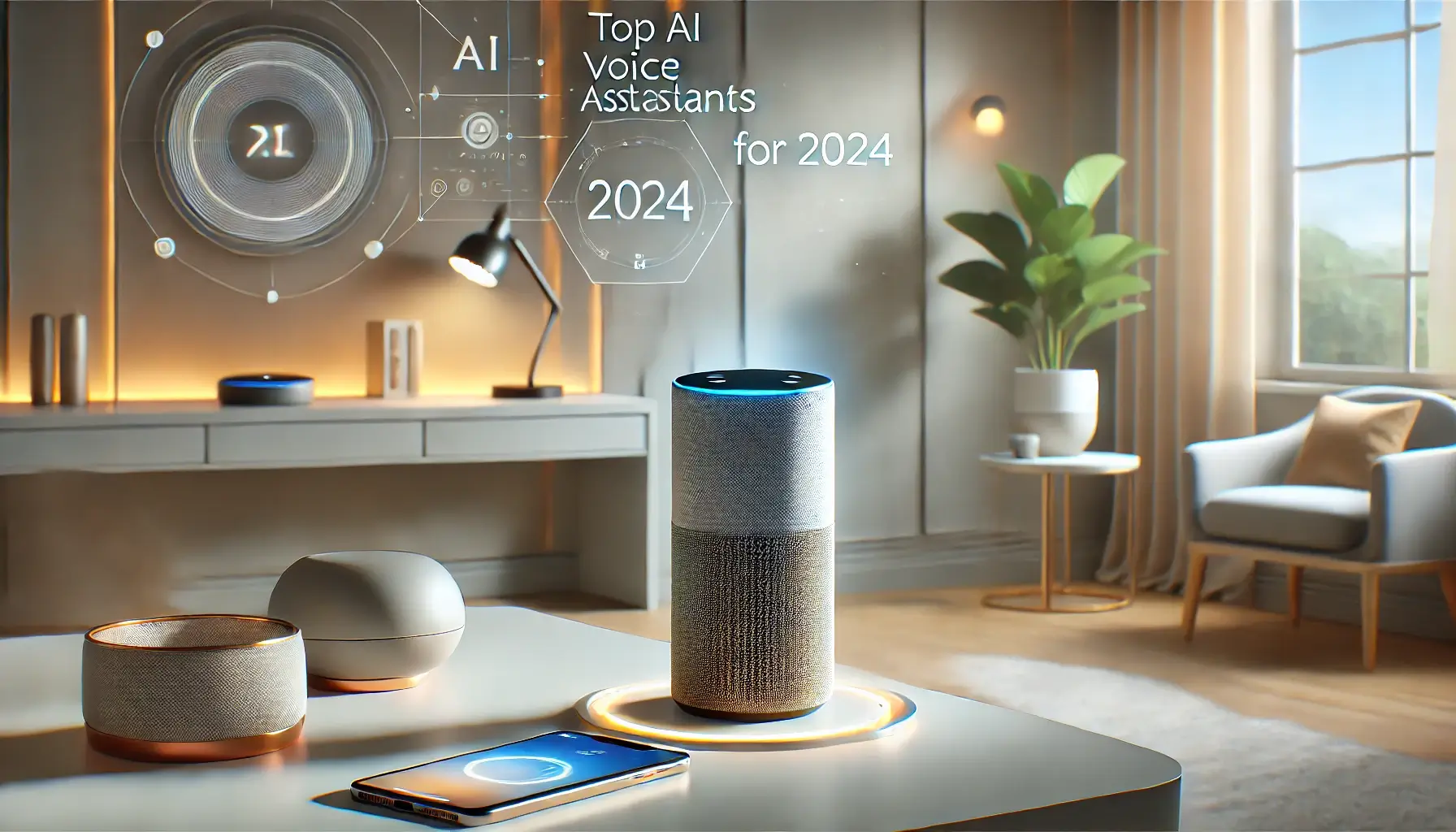





Discussion